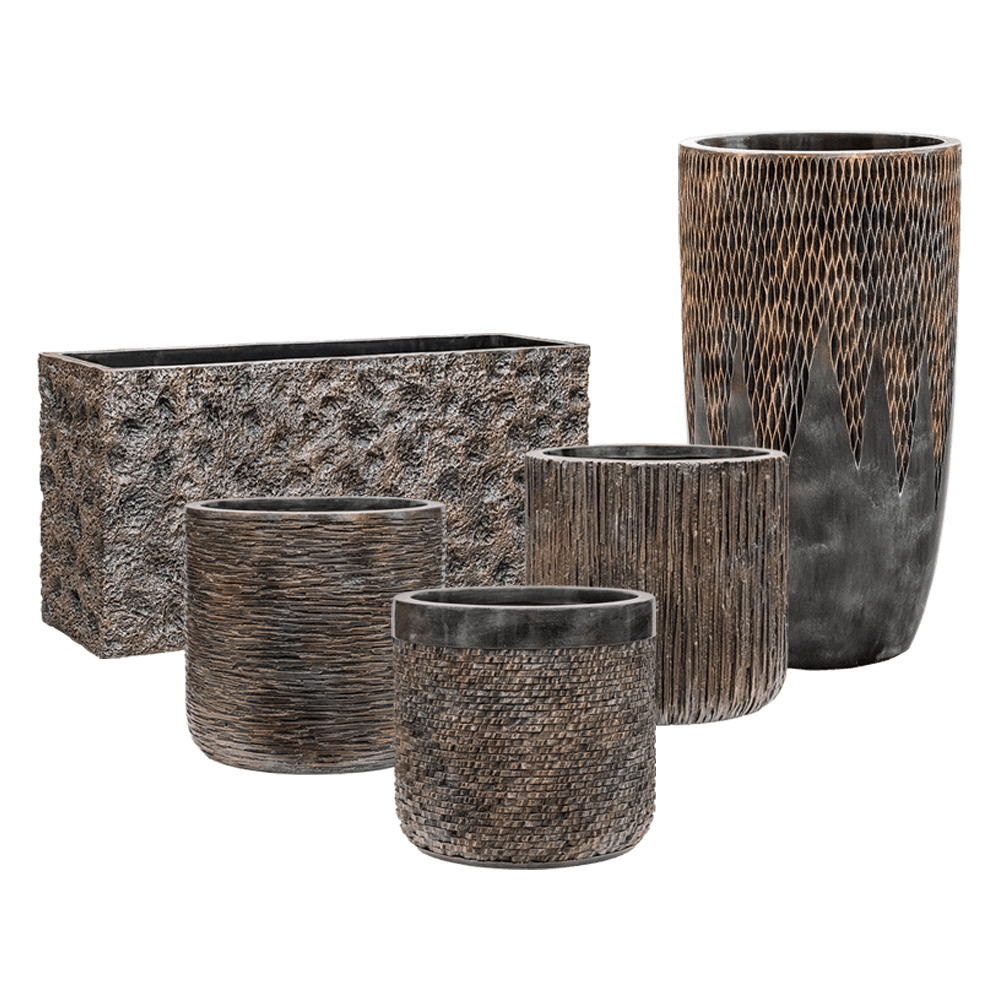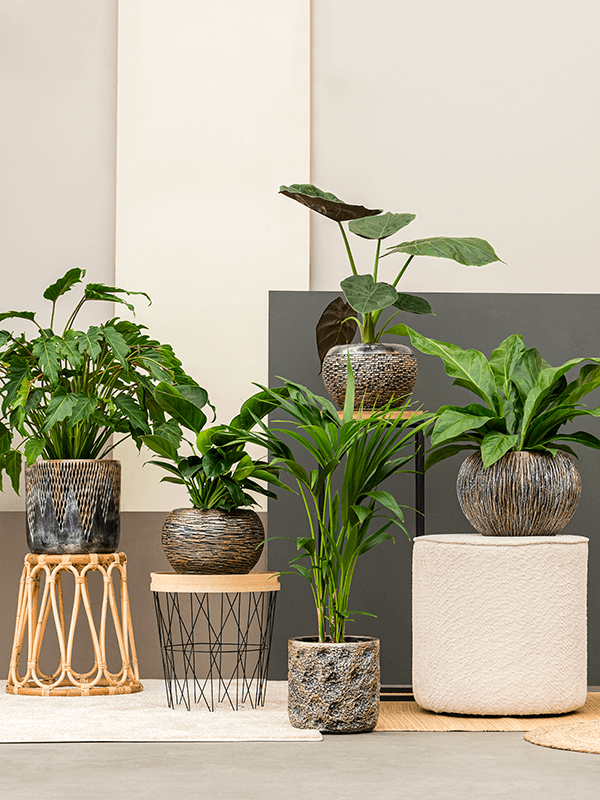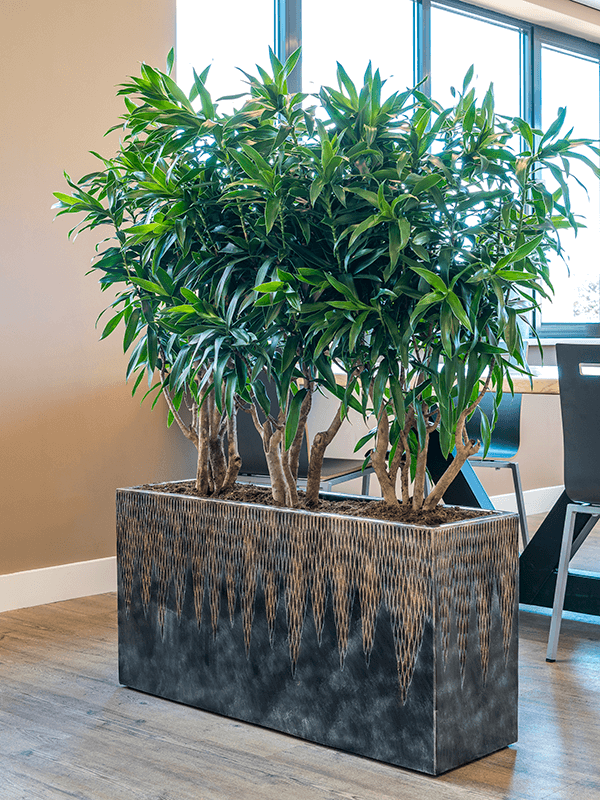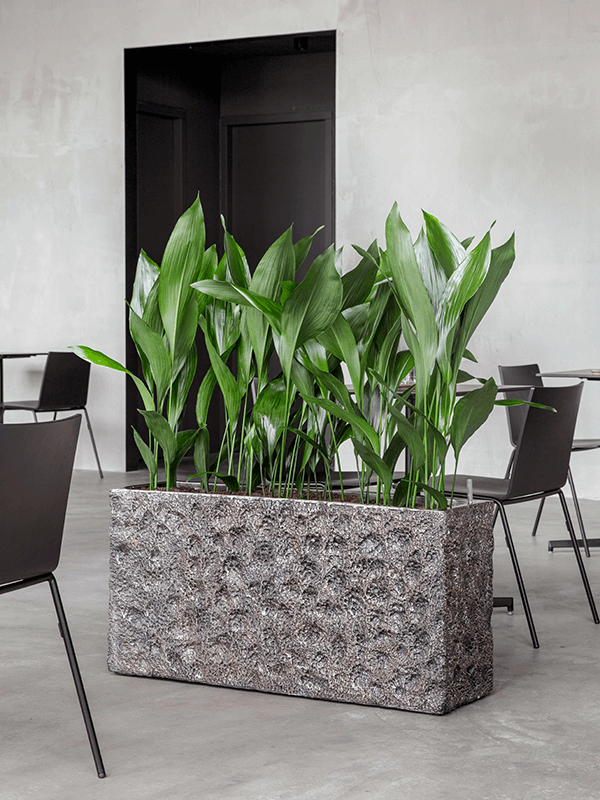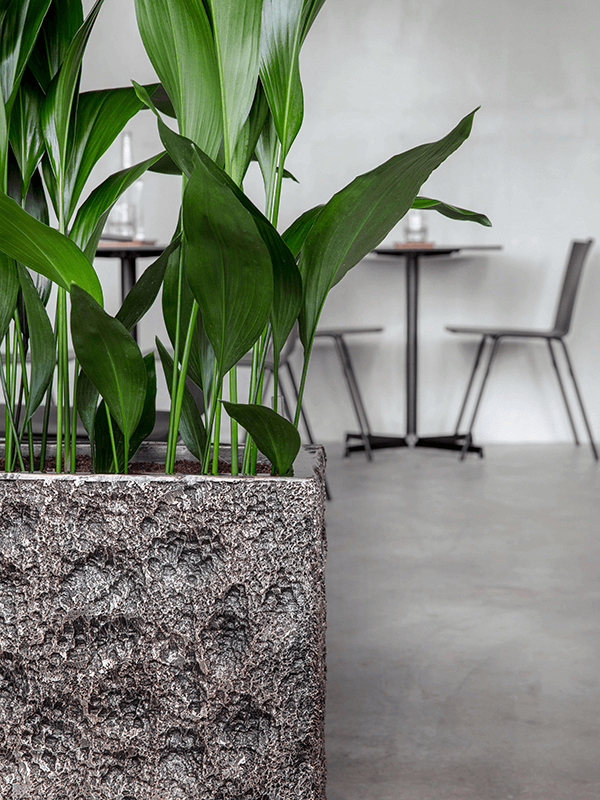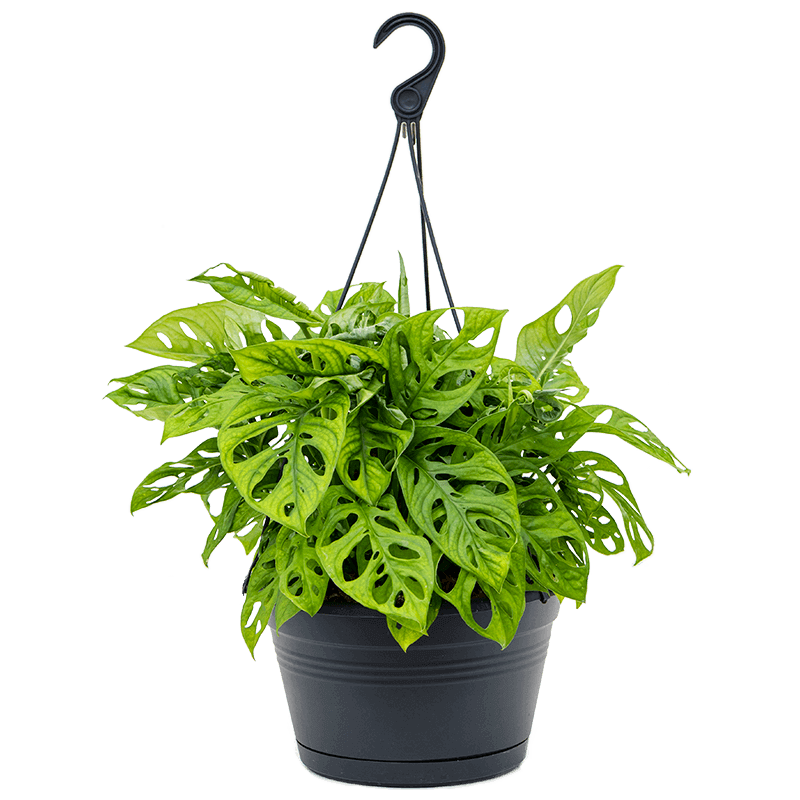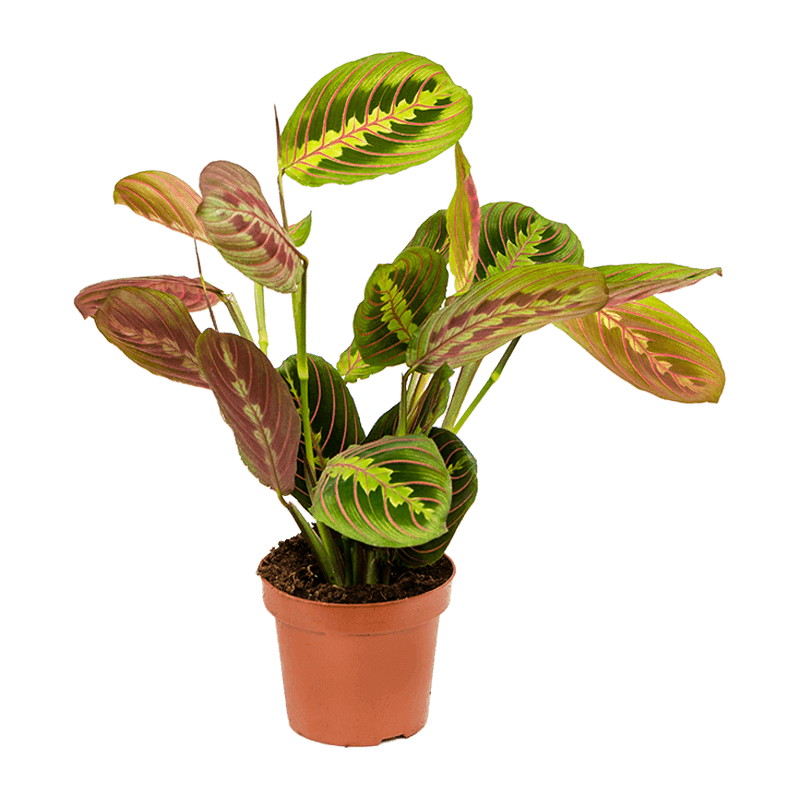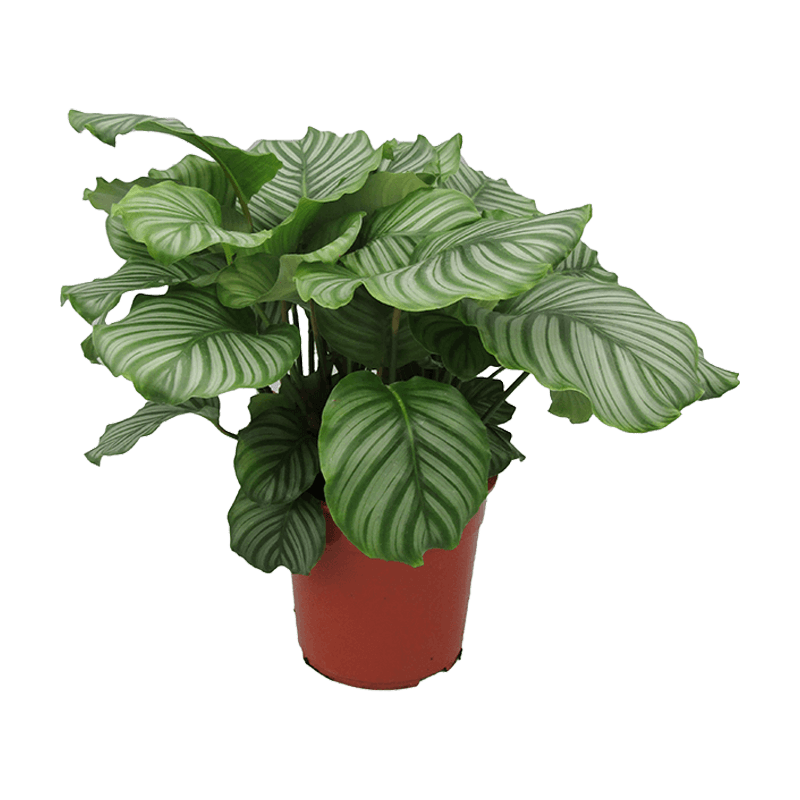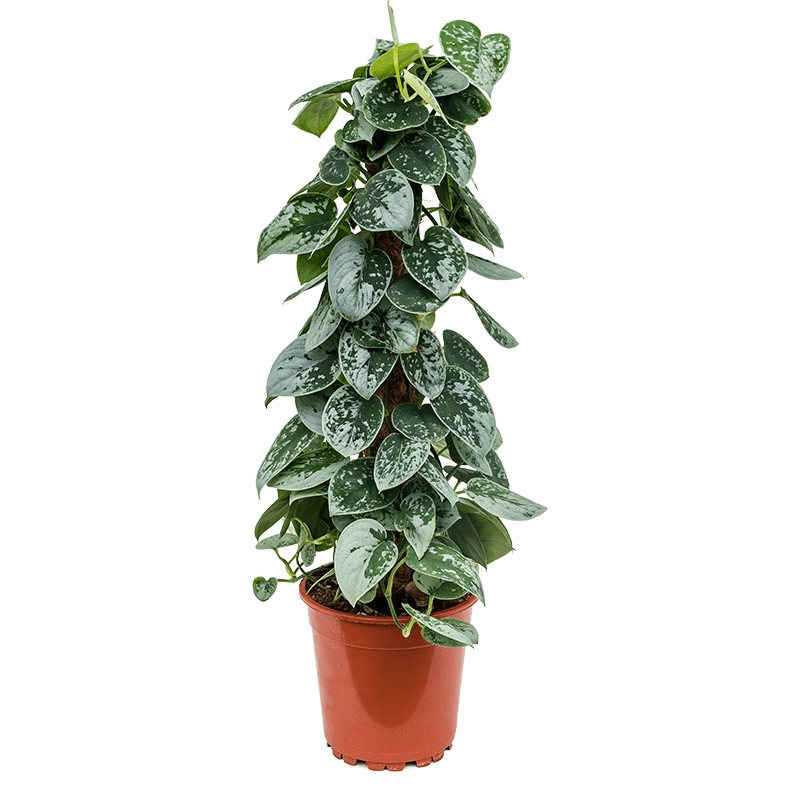how to care for fatsia japonica
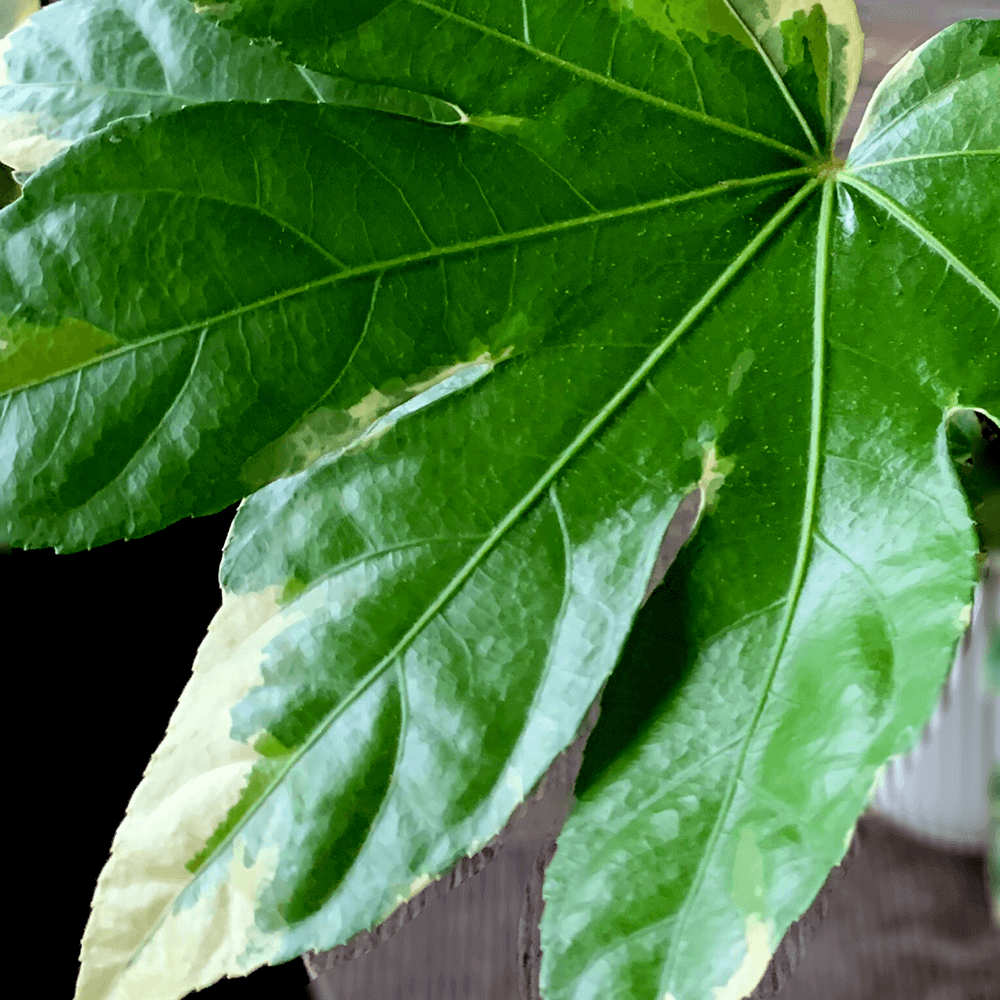
quick care guide for fatsia japonica
 |
Every week in summer; every two weeks in winter |
 |
Does well in medium sun |
 |
Fertilize once a month in the summer |
 |
Pet friendly |
 |
Strong air purifier |
A hardy, upright plant, the Japanese Aralia can grow up to two meters tall indoors. Its lush, dark green leaves and ease of care make it a very popular varietal for indoor plant collections, but it’s also a staple of tropical gardens and arboretums.
detailed care guide for fatsia japonica
Scientific Name: Fatsia Japonica – but is also known as Paper Plant, Japanese Aralia, Spider’s Web
Origin: Japan & Korea
Light: Japanese aralia grows best when places in partial to full shade. Exposure to bright, direct sunlight can bleach the plant’s leaves, so only place it beneath diffused morning light, never harsh afternoon rays. Note that the variegated version needs more light than the regular green plant.
Water: Regular moisture is essential for the Japanese aralia during its growing season (spring and summer). Water regularly to ensure the soil never dries out, saturating the soil completely until water runs from the container’s drainage holes. During the fall and winter months, cut back on your watering slightly to allow the plant to rest.
Soil: The hearty Japanese aralia plant is not too picky when it comes to soil.
Temperature: These plants grow best if you can provide warmer conditions (16-26 C) throughout the growing season, but cooler (not cold) conditions (10-15 C) during the wintertime.
Fertilizer: Can be fertilized once or twice a month during growing season (spring to autumn).
Humidity: It does not necessitate any additional forms of humidity to thrive within your home but would appreciate some misting every once in a while. Should be kept away from particularly strong or cold drafts.
Pruning: These plants can get quite tall, so don’t be afraid to cut your plant back. You can do this at the time of repotting, or anytime that the plant is getting too big for your liking. By cutting your plant back, you can propagate the tip cuttings, but at the same time, your original plant will respond by becoming bushier.
Re-Potting: Because Fatsia Japonica can grow to be so large, keeping an eye on it pot is important. Once the plant is showing signs of outgrowing its vessel (like roots growing out of the drainage holes), or at least once a year, replant your Japanese aralia in a larger pot.
Propagation: To propagate, take a cut of stem from a mature plant early in the growing season and use a rooting hormone for best success. Place in a pot filled with moist soil and cover the pot with a plastic bag. Keep cuttings in a warm, humid place until new growth emerges—it should take root in one to two months.
Diseases and Pests: Like many plants, Japanese Aralia is susceptible to a variety of aphids, which are also known as plant lice. These very common pests feed on the leaves of the plant (typically new growth) and can stunt or hinder its ability to prosper. More notable is the Japanese aralia’s issue with mealybugs, also known as white fuzzy bugs. Characterized by spots on the underside of the leaves that look like small splotches of cotton or powder, mealybugs leach fluids from the stems and leaves of the Japanese aralia, robbing it of the essential nutrients it needs to grow. Both aphids and mealy bugs can be killed with neem oil spray.
Toxicity: The Fatsia Japonica is not poisonous to humans, cats, or dogs.
fatsia japonica origins & overview
These big palmate (hand-shaped) leaves just get bigger and more pronounced over time. They can grow upwards of two meters tall inside your home! The leathery leaves radiate from the center of the plant and create a cloud of dense foliage, very much like leaves on outdoor trees, but in a compact, manageable form. Trim back the leaves early in the growing season to encourage more leaf growth. The stems thicken with age, and you can cut them back dramatically if your Fatsia becomes overgrown or leggy.fatsia japonica light requirements
One reason that Japanese Aralia is well-suited to indoor culture is that it is a shade-loving plant, even tolerating heavy shade. The low light conditions inside most homes, which cannot support the growth of many types of plants, work beautifully for Japanese Aralia. Exposure to bright, direct sunlight can bleach the plant’s leaves, so only place it beneath diffused morning light, never harsh afternoon rays. Note that the variegated version needs more light than the regular green plant.
how to water the fatsia japonica
Strike a healthy balance of slightly moist soil to keep your Japanese aralia in peak health by watering it regularly during active periods of growth. But, beginning in autumn and continuing through the winter season, reduce watering. If you keep the soil too wet, Fatsia Japonica may suffer from fungal root rot disease. Drench the soil completely when watering and allow the soil to partially dry out between waterings periods. Monitor the watering on this indoor plant as it does not like wet soil. The leaves will let you know it’s overwatered through yellowing, dropping leaves.repotting the fatsia japonica
With the potential mature size of Japanese Aralia in mind, you may want to choose a heavy container such as a ceramic or terra-cotta pot. Otherwise, the top growth may be heavy enough to tip over a plastic pot. When your plant is small, pot it in a container that’s only slightly larger than its root ball, and keep repotting accordingly as the plant grows. With an inordinate amount of potting mix proportionate to root size, the mix may retain too much water and promote root rot. Choose a prepared potting mix that contains humus or other organic matter, because Fatsia Japonica grows best in a rich medium. Check the potting mix label to see if it contains a slow-release fertilizer. If so, you won’t need to apply any additional fertilizer for the effective duration of the fertilizer contained in the potting mix, which the label will also note.

Decorative pots are approx. 11 cm.

Plants have a diameter of 11 to 13 cm.
Decorative pots are approx. 14 cm.

Plants have a diameter of 14 to 16 cm.
Decorative pots are approx. 17 cm.

Plants have a diameter of 17 to 19 cm.
Decorative pots are approx. 20 cm.

Plants have a diameter of 20 to 24 cm.
Decorative pots are approx. 25 cm.
extra small |
Plants - 8 to 10 cm diameter Pots - 11 cm |
small |
Plants - 11 to 13 cm diameter Pots - 14 cm |
medium |
Plants - 14 to 16 cm diameter Pots - 17 cm |
large |
Plants - 17 to 19 cm diameter Pots - 20 cm |
extra large |
Plants - 20 to 24 cm diameter Pots - 25 cm |

